How Do Acoustic Panels Really Work? [Explained]

Are you irritated by the echoes and noises in your home studio or office? Noise pollution can take a toll on people's concentration, affecting their productivity, creativity, sleep, and much more. However, you can combat this problem with the help of acoustic panels, strategic furniture placement and textile choices, and a few other methods that we’ll cover.
You must be thinking, how do acoustic panels work, and is it worth placing them in my home or office? Well, fret not. Today we’ll cover all you need to know about what acoustic panels are, how they work, different types, benefits, tips, tricks, alternatives, and much more.
What are Acoustic Panels?
Acoustic panels are products designed to reduce sound reverberations (also known as echo) in interior spaces. They are typically made from porous materials that are designed to absorb sound waves, rather than reflect them, such as fabric, felt, foam, and even wood or fiberglass.
Because aesthetics are often almost as important as acoustics, acoustic panels come in all shapes, sizes, and designs, so you can also use them to decorate your space. Standardized acoustic panels are mostly made in rectangular and square shapes for simplicity of installation, but they’re often customizable, either on-site or in-house if you’re having them custom made (this is more common with large, commercial jobs like office buildings, banquet halls or government buildings).
Not only do they absorb sound, but many acoustical panels also boast thermal properties, meaning they can partially insulate your space to maintain a more consistent internal temperature.
The installation of these panels is quite easy, and they are usually installed in a wide range of settings, including offices, home studios, restaurants, and movie theaters. However, people also use them in their kitchens, dance studios, study rooms, and bedrooms for decorative purposes.
How do Acoustic Panels Work?
The science behind acoustic paneling is quite straightforward. When sound waves hit a hard surface, they bounce off and reflect back into the room, causing echoes and a long reverberation time. Acoustic panels work by absorbing the sound waves, rather than reflecting them. When sound waves hit an acoustic panel instead of a hard surface like drywall or concrete, they enter the porous material of the panel and get trapped inside, dramatically reducing the amount of sound that is reflected back into the space. Because of this process, echos and sound reverberations are significantly reduced.
How to Choose the Right Acoustic Panel?
There is a way to measure how absorptive an acoustic panel is, and the rating is known as the Noise Reduction Coefficient, or NRC for short. When shopping for acoustic panels, always look for the NRC rating, as this will tell you approximately how much an acoustical panel will absorb sound in your space.
NRC ratings are usually between 0.0 and 1.0, but due to the testing method used (ASTM C423) ratings can sometimes be even higher. This is moreso a limitation of the test method (which can have marginal errors to account for the 3D nature of a testing surface) rather than the material being tested.
Regardless, a simple rule of thumb is this: the higher the rating, the more sound absorbed. Another good way to remember it, is the NRC rating is the percentage of sound that will be absorbed by the product. 0.7 NRC? 70% noise reduction.
A concrete wall usually has an NRC rating of about 0.05, meaning that 95% of sounds that hit that wall will be bouncing back into the space. However, something like a wood acoustic wall panel can boast an NRC rating of 0.85 or higher, meaning that about 85% of sound waves that hit the panel will be absorbed, rather than reflected back into the space.
The Basics of Sound Absorption
Sound absorption is a process when any sound waves hit a surface; instead of reflecting, the waves get absorbed in the material. It contributes towards sound reduction. Moreover, the absorption of waves produces the heating effect, which ultimately becomes a plus point.
Sound-absorbing products use porous material and usually have a larger surface area to soak in the waves.
The Role of Porous Materials
Due to low density and large surface area, porous material plays an important role in sound absorption. The small spaces within the material create pathways for sound waves to travel through and get trapped within the material, causing the sound energy to be dissipated as heat energy. Additionally, the lightweight of porous materials means that they can vibrate easily in response to sound waves, which increases their potential to absorb sound. This is why porous materials such as fiberglass, foam, and mineral wool are commonly used in the construction of acoustic panels.
The Function of Air Gaps
Air gaps can effectively increase the absorption of sound waves, especially long-wavelength or low-frequency sound energy, which contributes significantly to the reduction in echo. Air gaps can typically be added behind acoustic panels to improve their efficacy.
How does this work?
Well, all you need to do is install spacers behind your acoustic panels, this can be as simple as strips of MDF or framing lumber to create a gap between the back of the panel and the wall or ceiling.
Instead of the sound waves bouncing off the panel and the material behind it (for example, the concrete wall the panels were mounted on), an air gap creates an extra barrier for the sound wave to pass through.
When acoustic panels are mounted with an air gap behind them, the sound wave passes through the acoustic panel, is partially diffused, hits the surface behind the panel, is reflected back out and through the acoustic panel for a second time, diffusing the sound wave even further. This is why adding an air gap behind your acoustic panel installation can double its Noise Reduction Coefficient.
For places like restaurants or any space where extra noise reduction is required, installing your acoustic panels with an air gap behind them is a simple, easy way to dramatically improve the acoustical performance of your space.
Types of Acoustic Panels
Acoustic panels come in various types, including fiberglass, foam, wooden, and ceiling tiles. Fiberglass panels are lightweight, durable, and highly effective at absorbing sound, while foam panels are a popular choice for low-budget projects where acoustics are more important than aesthetics. Wooden acoustic panels are often used for decorative purposes, and ceiling tiles are often a popular choice for commercial buildings.
Fiberglass Acoustic Panels
If you are just starting your search for acoustic panels, there is a high probability you will come across fiberglass as a popular material, as it is known for being lightweight, easy to install, and very sound absorptive. Besides, it is one of the oldest materials used to make acoustic panels, so it’s considered a reliable, economic choice.
Fiberglass panels are not directly installed but wrapped in a covering. The ideal type of covering for you greatly depends on the application. For example, if you are concerned with the aesthetics of the space, fabric covering is the ideal choice. Fabric coverings come in all types of designs, so you can easily match them with the theme of your space.
The material of the acoustic panels affects their sound-absorbing tendency. Fiberglass absorbs more sound waves than most other materials used to make acoustic panels. So, it’s a great choice where acoustics and budget are top priorities.
Foam Acoustic Panels
You must have seen those DIY sound booths in home studios made with a soft material all over the walls and ceilings. That material is typically foam (often in a convoluted or fluted pattern) and it is one of the most commonly used materials in acoustic panels. If you are a beginner and don’t know much about acoustic panels, deciding on the panels' material becomes difficult. However, opting for foam panels is usually a safe bet, especially if you’re working on a budget and don’t want to have to wrap your panels, as you would with fiberglass acoustic panels.
The best part about foam panels is that they are very affordable. So, if you can’t afford to invest too much money in acoustic panels, foam panels can serve their purpose well. As for the aesthetics, they might not be the most attractive thing to install in their room, but you can rely on them to reduce extra noise.
Also, cleaning them is not easy. Dust gets easily trapped in the pores of the foam and doesn’t come out easily with a vacuum. The relatively delicate nature of the foam can also result in the panels becoming easily damaged if you try to clean them, so make sure you install them in environments where there won’t be much dust, or the dust won’t be very visible (like a dimly-lit home studio).
Wood Slat Wall Panels
If you actively work towards achieving sustainability and you want your acoustic panels to actually look nice in your space, wood slat acoustic panels might be your best option.
These acoustic panels are made from a combination of an acoustical felt backing, MDF, and real wood veneers. Their fluted wood panel design adds to their acoustic performance, as sound waves are caught between the slats and in the felt backing, reducing echo by up to 85%.
Another great thing about this panel design is its ease of installation. While most wooden acoustic panels must be installed by professionals using a complex array of tools and measurements, these wood slat acoustic panels are almost as simple as foam panels when it comes to installation.

Simply use black screws or nails to screw through the black acoustical felt backing and attach them to your wall or ceiling. You can also read more here on How to Install Wood Slat Wall Panels.
Benefits of Acoustic Panels
Acoustic panels are used for absorbing extra sounds and noises, but that’s not all. These panels have several benefits that will convince you to install them in your home and office.
Better Speech Intelligibility
If you are designing an area where conversation will be had, acoustics are a crucial component to your space. Whether it’s a restaurant, an event space, or just a home where a family will be living and conversing, the design of a space where people will be talking to each other should take acoustics into consideration.
The reason for this is that an untreated room can often make conversation and socializing difficult, as voices, music and other sounds will all be bouncing off hard surfaces, resulting in thousands of sound reverberations at any point in time.
This results in guests hearing multiple different sounds, all being echoed around the space and hitting their ears multiple times per second, which makes conversation harder to understand and can even result in listener fatigue.
Acoustic panels will absorb sound rather than reflecting it back into the room, which makes it easier for people to have conversation, hear music, and enjoy a relaxing atmosphere.
Reduced Noise Pollution
Noise pollution is excessive and unwanted sound that can have negative effects on health and well-being. Exposure to excessive noise can lead to stress, sleep disturbance, hearing impairment, and other health problems. It can also reduce cognitive performance, productivity, and communication.
So, installing items that can reduce noise pollution is a great way to make your space more productive, relaxing, and even healthy, depending on its use. Regardless of the environment, acoustic paneling will significantly reduce noises and echoes, making your space free of noise pollution and improving the health of those who spend time there.
Enhanced Productivity
The use of acoustic panels in workspaces and offices is seen to have improved the productivity levels of the employees. Bad office acoustics can irritate employees and make it difficult for them to concentrate and stay focused.
However, with acoustic panels, you can create a quiet environment that can help improve the focus of your employees.
Improved Aesthetics
If you opt for design-forward decorative acoustic panels that match the theme of your space, they can improve the aesthetics as much as the acoustics. While painted walls may seem good enough, adding natural elements like wood to the walls of your space can truly give any room a more sophisticated, elevated look. Panels like these are also great for hiding unsightly characteristics on your wall or ceiling, like chipped paint, hairline cracks, and other imperfections.

Tips for Installing Acoustic Panels
Though installing acoustic panels is not difficult, you need to keep a few things in mind. Here are some tips to ensure you don’t mess up the installation process.
Choosing the Right Panel Placement
Deciding on the position of panel placement is a crucial decision that must be made carefully. Make sure you research the basics of panel placement and the adjustment of the material that your acoustic panels are made up of. This way, you can plan where to install them.
The most common placement positions are walls and ceilings, and usually opposite where the main sound sources will be. This is why you may see acoustic panels behind the TV in a living room, as the surround sound speakers will direct soundwaves to the front of the room where they’ll need to be absorbed to ensure a top-notch viewing experience. Many homeowners also opt to place acoustic panels behind the couch for the same reason, especially if they’re using a soundbar or a single source of sound in their living room setup.
Acoustic panels are also often placed in the corners of rooms. When installing them in this position, keep in mind the ease of cleaning, as corners will naturally collect more dust and require more frequent cleaning over time.
Proper Installation Techniques
Each panel material requires a different installation technique. For example, you cannot install wood slat panels (usually installed with screws or adhesive) the same way as foam panels, which are typically installed with staples or construction glue). So, make sure you are asking your supplier what installation method they recommend for your space.
Regular Cleaning and Maintenance
You’ll want to be able to clean your acoustic panels occasionally, or at least remove any excess dust once it builds up. Your acoustic product and material choice will largely affect how easily you’re able to keep them clean.
For example, pre-finished wood acoustic panels are typically easy to clean with a slightly damp cloth, as the smooth wood surface is easy to wipe down. Even wooden slat acoustic panels can be quickly cleaned between the slats using a vacuum cleaner.
That being said, other materials like foam are harder to clean due to how light the material is. If you’re opting for fiberglass acoustic panels, ensure that the material you choose to wrap the panels with is relatively easy to clean, either with a vacuum cleaner or even a lint roller.
Other Ways to Reduce Echo in Your Space
While it’s undoubtedly the most effective way to improve the acoustics of your home, office, or business, acoustic panels are not the only way to dampen echo and improve the acoustics of a space.
There are other methods that will contribute to sound absorption and reduction of echo that are also worth considering, often in tandem with acoustical paneling or other methods.
Adding Soft Furnishings
If you live in a noisy area, you should be mindful about how you furnish your home, as furniture and decorative items can also help in sound absorption and make your home more acoustically comfortable.
For example, use soft fabric instead of leather or latex for curtains and upholstery, and consider adding a few extra cushions to your sofa. Decorative items such as canvas art (instead of glass picture frames) can also significantly improve sound absorption in your space.
Placing Furniture Strategically
Furniture placement and material choices also play a very important role in the acoustic treatment of any room. Instead of using wood furniture, replace it with fabric furniture like couches. It is better to opt for furniture that is upholstered with plush fabric, as this can help reduce the noise.
Furniture items that are placed against walls typically have sound absorption qualities, especially if they’re holding items made from softer, more solid materials.
What are we talking about? That’s right, books! Installing a bookshelf and filling it with books is an incredibly efficient way to reduce noise in a space, as heavy objects break up sound vibrations and make it difficult for the sound to travel. Maybe that’s why libraries are so quiet?
Using Rugs and Carpets
If you hate the noise produced by footfalls and objects being dragged across the room, rugs or carpets are a great investment. Putting a rug down is the one of the easiest ways to cover your floor in an aesthetically pleasing way and reduce noise pollution at the same time.
As sound waves travel through the room and hit the floor, instead of bouncing them back, rugs and carpets absorb them, which reduces echoes and reverberations.
Using Fabric Blinds
Offices and studios usually have metal or wood blinds. Though affordable and low maintenance, they are not really helpful in reducing echo. So, if you currently have metal or wood window coverings (or none at all) and are concerned with the noise levels in your space, switch your metal/wooden blinds for fabric blinds.
As the fabric absorbs the sound waves instead of reflecting them, the echoes in your space will be reduced. If you have extra room in your budget, you should invest in noise-reduction curtains. Though they are expensive, they are worth it.
Conclusion
Acoustic panels are a great way of reducing environmental noise and reverberation. You can get these in all sizes, shapes, and designs. So, along with improving the sound quality, these noise-canceling panels also serve decorative purposes, enhance productivity, and improve sound intelligibility.
Installing these acoustic panels is a win-win situation, so don’t wait anymore and make your office/home/studio noise-free. Check out Andor Willow and get the best decorative acoustic wood panels for your place.
Up Next: Elegant Accent Wall Ideas to Elevate Your Bathroom Walls
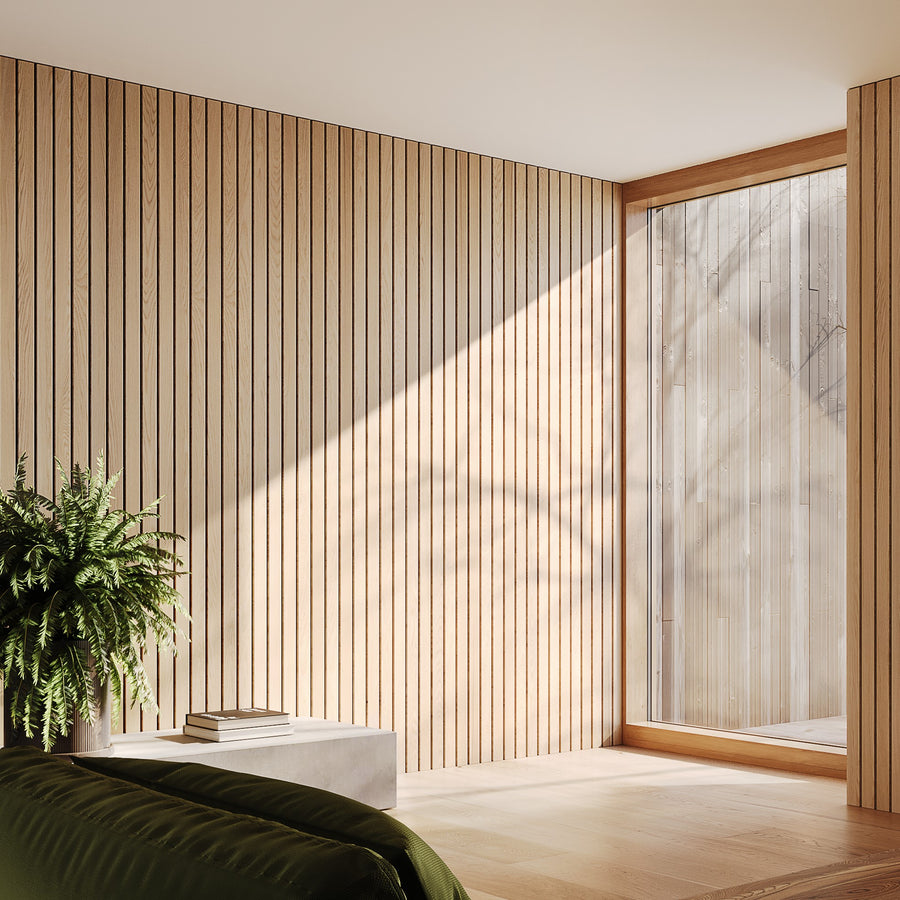
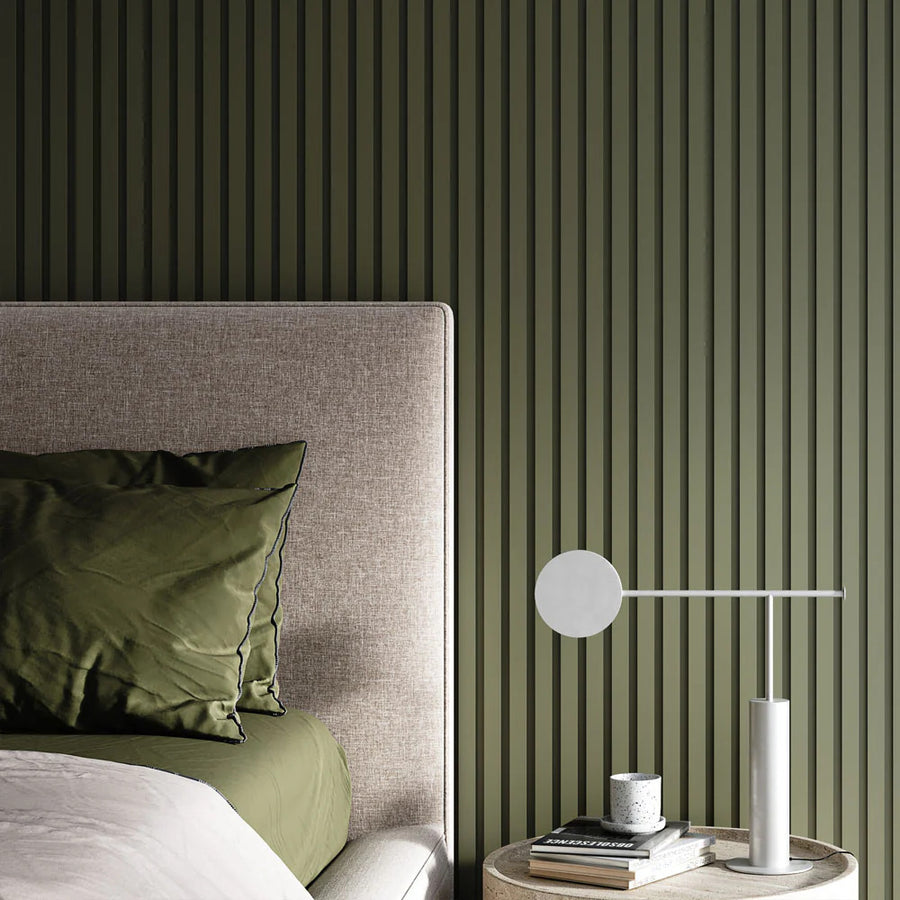
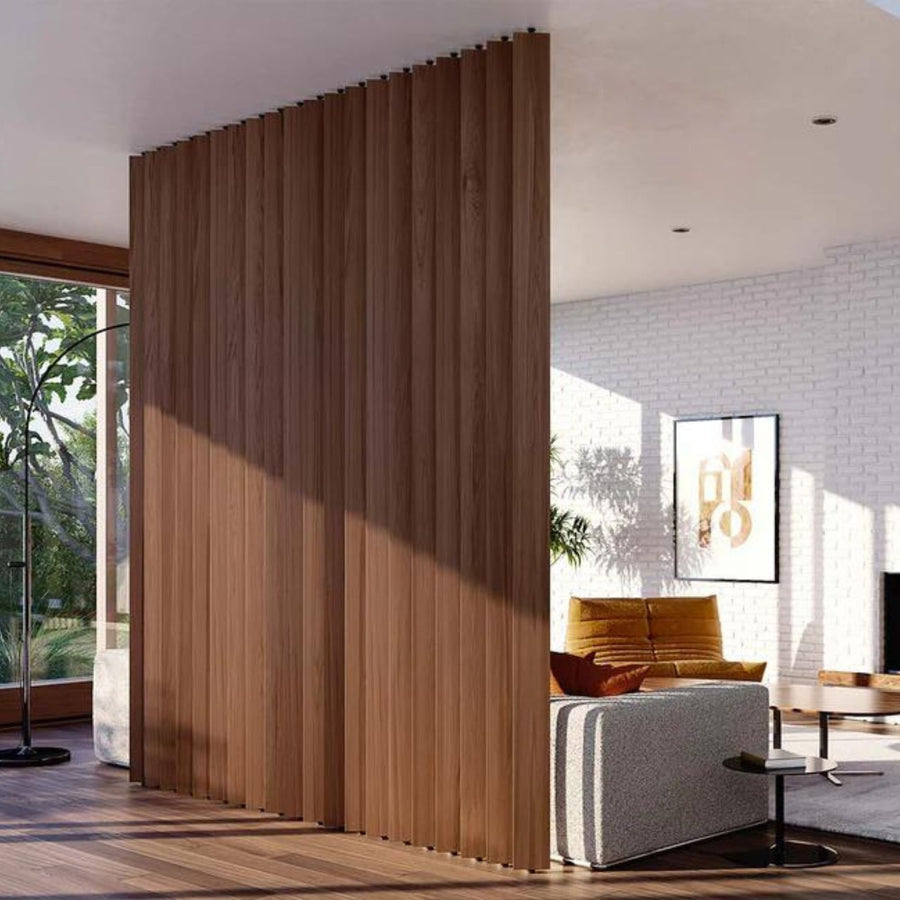
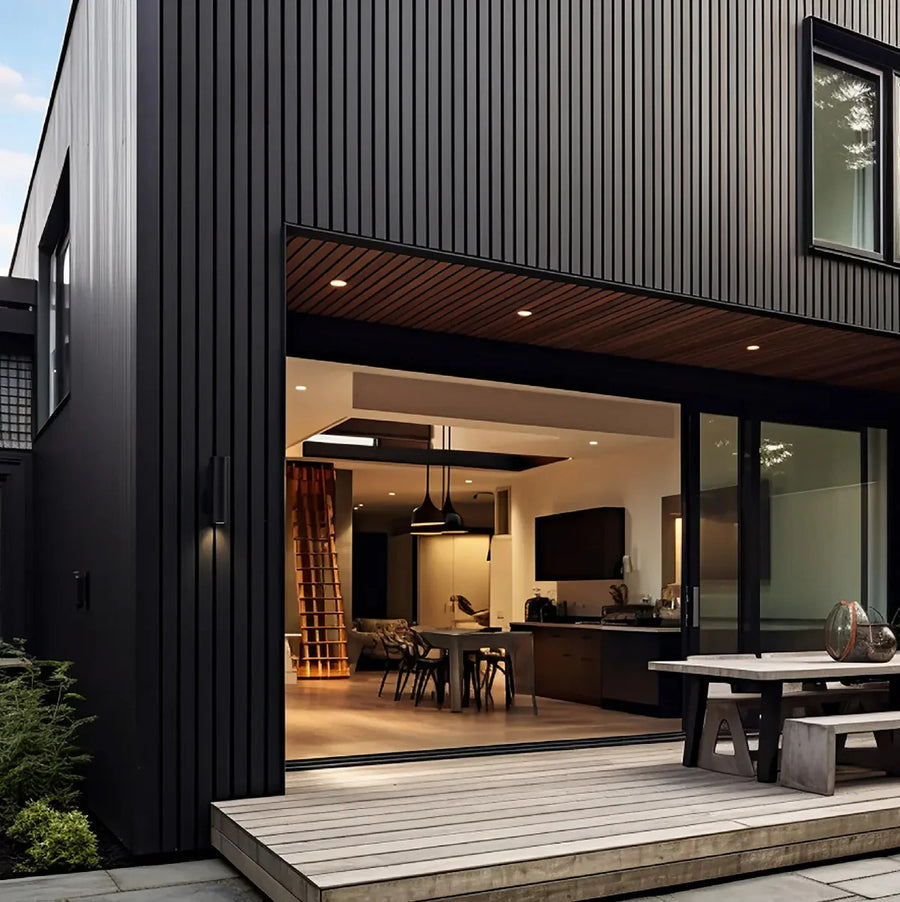
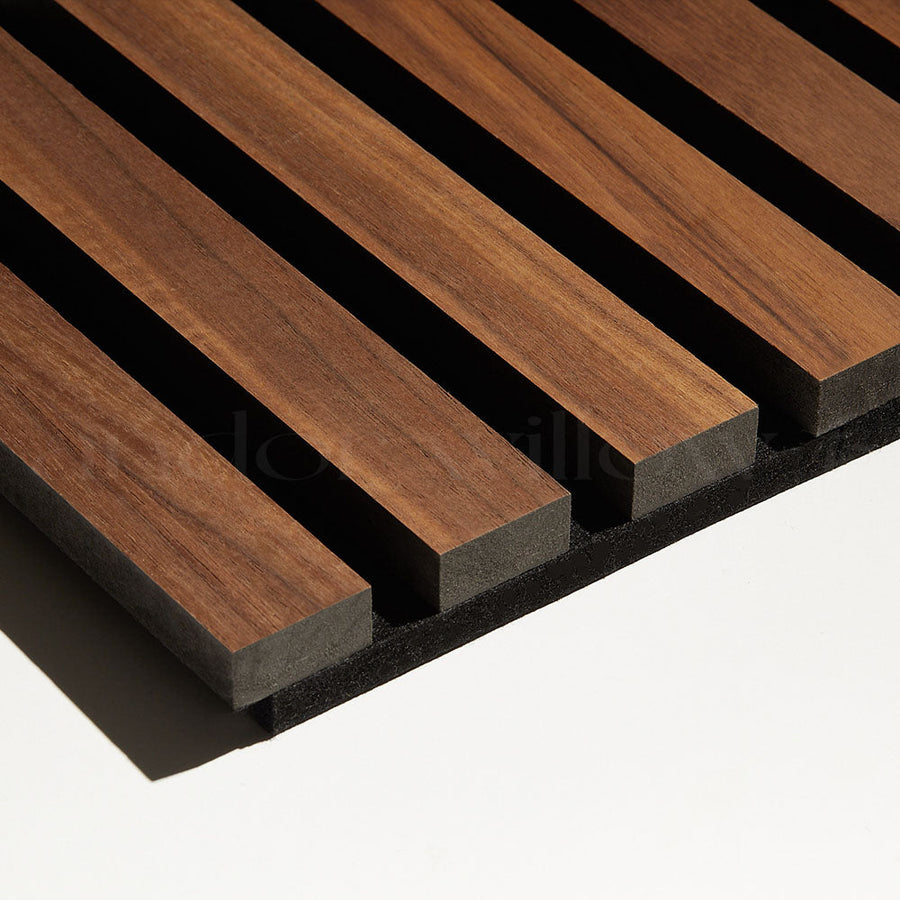
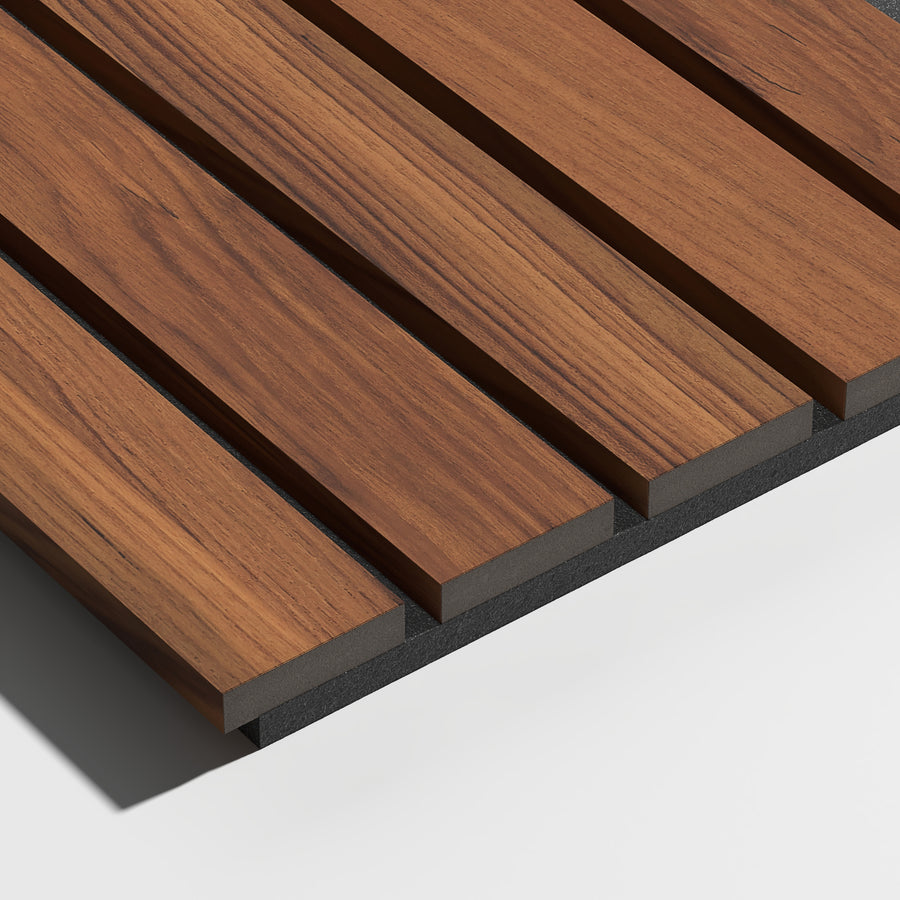


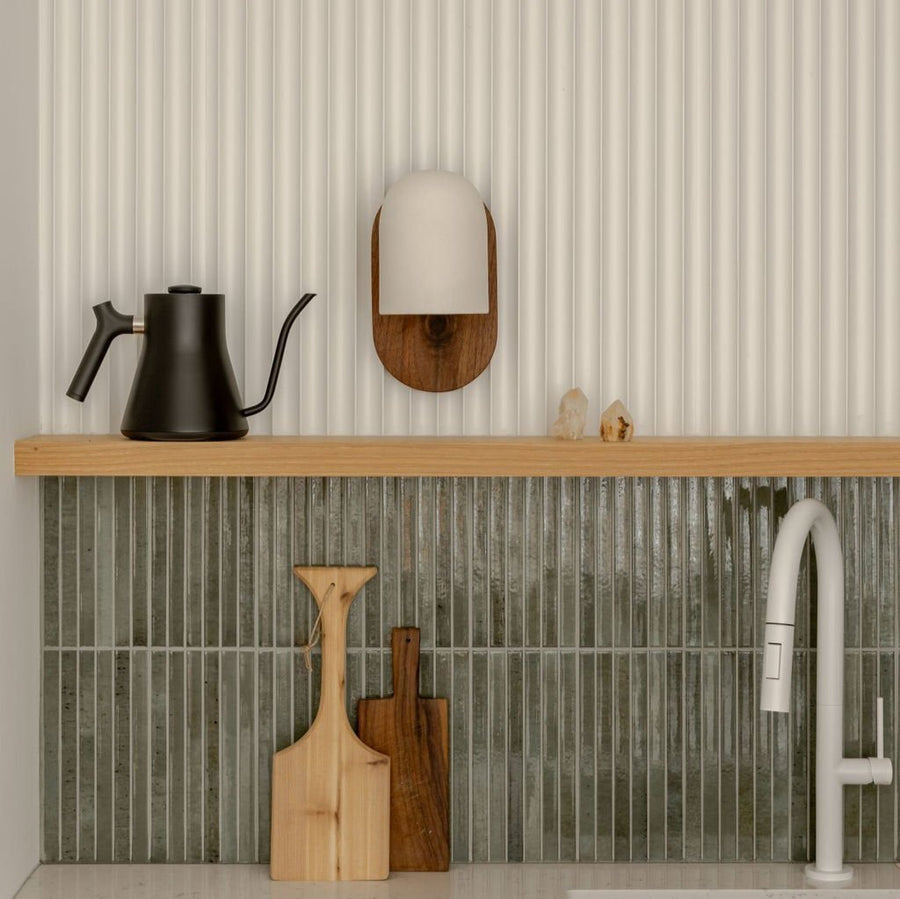
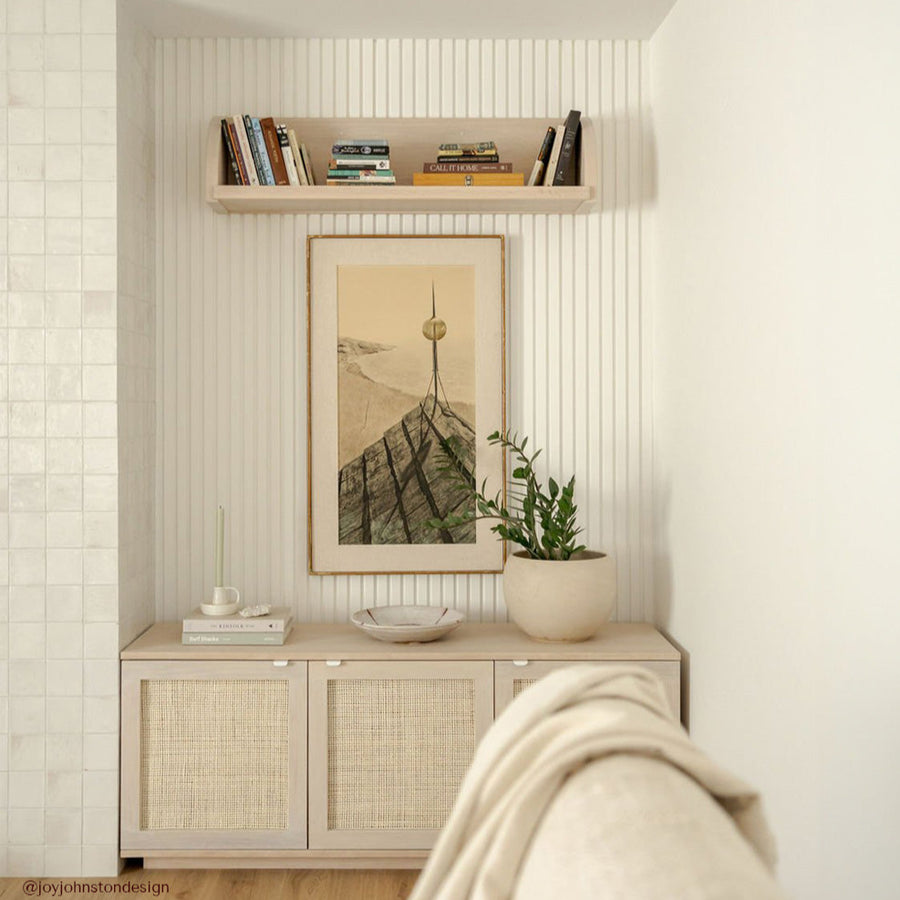

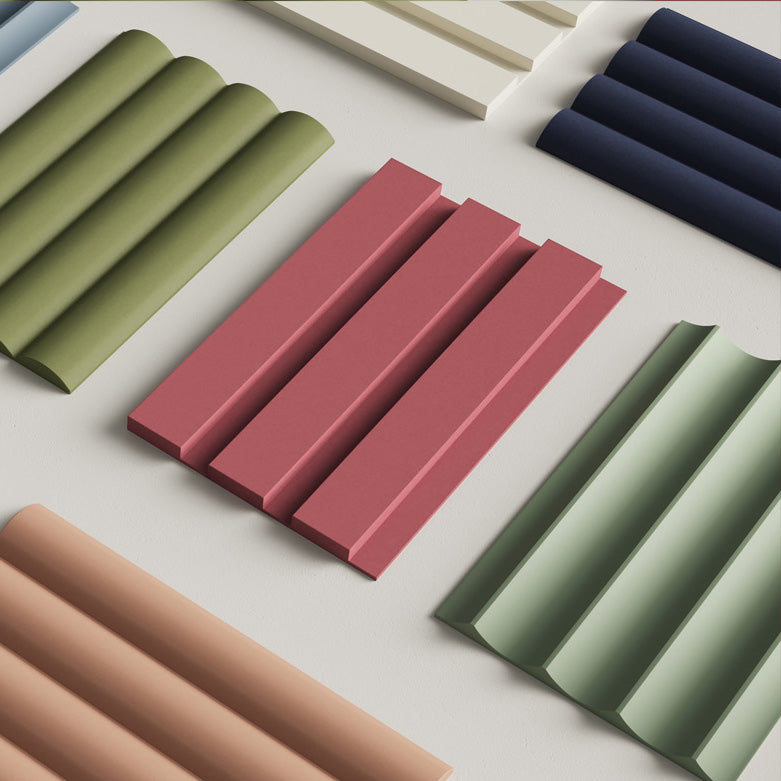











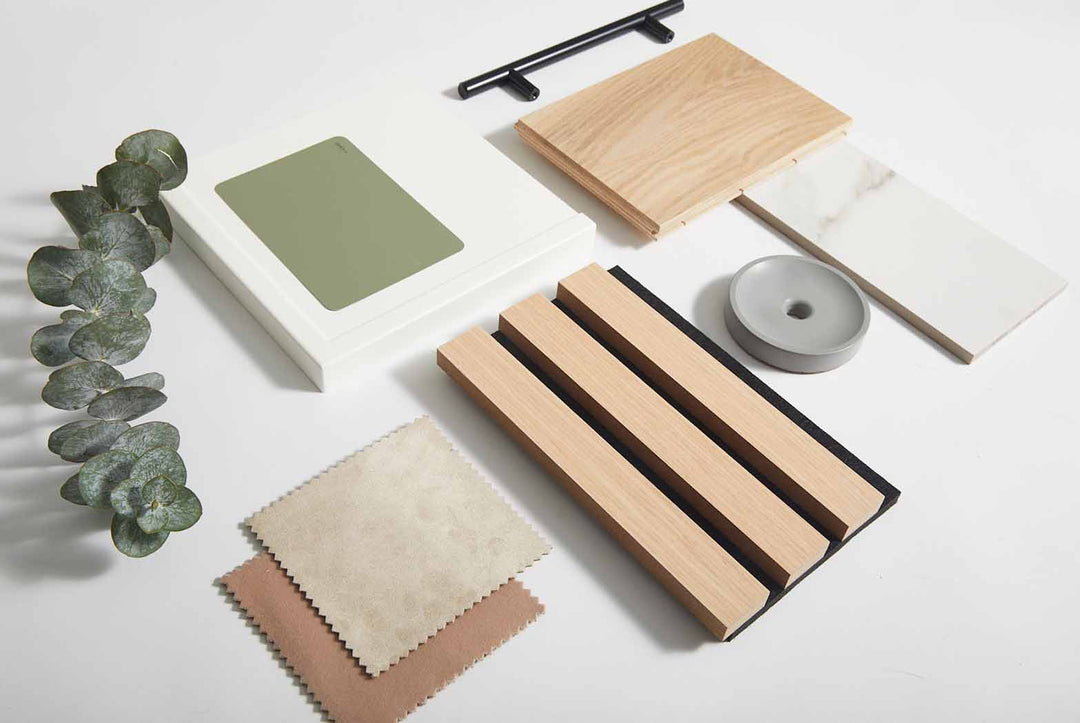
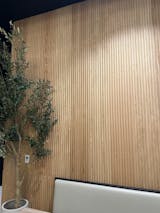
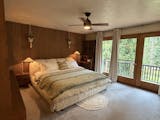










This was such an insightful read! I really appreciate how clearly you explained the science behind acoustic panels. Breaking down how they absorb sound instead of blocking it helped clear up a common misconception I had.
This was a super informative read. Thanks for breaking it down so clearly! I never realised how much science goes into acoustic panels. I’m planning to install some soon, and I intend to purchase from Soundproof Warehouse, which I believe is a good choice in my area.
This article explains acoustic panels clearly. The following tips will help you improve sound quality and reducing noise for a peaceful environment. Thanks for sharing!
This blog post does an excellent job of explaining how insulation acoustic panels work to enhance sound quality in a room. I found the detailed descriptions of how these panels absorb sound waves and reduce reverberation particularly helpful. Your insights into the materials used and their impact on sound absorption were quite informative.
One question I have is about the placement of acoustic panels in a space where both soundproofing and sound absorption are needed, such as a multi-purpose room or a studio. How would you recommend strategically placing these panels to optimize both noise reduction and sound quality? Are there specific guidelines or tips for achieving a balanced acoustic environment in such cases? Looking forward to your expert recommendations!
High Density Polyester Fiber Sound Panel Acoustic Insulation Materials for Cinema
PolyesterAcousticPanels is an acoustic construction company. From beginning to end, we have great value in providing customers with the best quality service! With many years of experience in delivering high-quality building sound insulation panels and acoustic sound absorbing panels, you can rely on us to complete your project regardless of the purpose and scale.
Our products have been sold to clients of ceiling company, home building firm, exhibition design company, contracting and construction company, and other companies. InteriorDecorationEE is an interior design company located in Birmingham, Michigan, which specializes in providing a design solution that can provide home decoration, remodeling and new house construction. ServiceTL is a fully-equipped, fully insured, family-owned and operated company that has been providing high-quality asphalt paving and related services to residents and businesses in the Hudson Valley since 1999. XEFJ is a licensed and insured general contractor providing services to Lexington, Arlington and other areas, specializing in expansion, renovation, new houses, custom houses and historical renovation projects.
Acoustic Sound Absorbing Panels Made in China Factory Polyester Fiber Acoustic Board 9mm Thk
Sound Desk Screen for Workstation Soundproof Sound Desk Screen Competitive Sound Desk Screen
We have many years experience of manufacturing and exporting to Greece, Saudi Arabia, Singapore, India, Brazil, Uruguay, United States, Australia, Spain, United Kingdom, Angola, Faroe Islands, Equatorial Guinea, etc.
Enquiries List
1. We are looking for a supplier of polyester acoustic panels that We can custom cut in our factory with a laser cutter. Please contact us as soon as possible. We would like to have a phone conversation. (We can speak Mandarin).
2. I am looking for two sound proof doors. Would like to know pricing and delivery cost for Saudi Arabia.
3. We are a trading company based in India. We have found your Sound Insulation Material Wall Soundproof Cladding Sound Deadening from site. How long will it take to receive shipment by air?
Our products are used in a lot of applications such as visitor centre, comprehensive cancer centre, flexible office space, civic center public library, classroom & reading rooms, multi purpose school hall, home theatres, memorial center, clean labs, broadcasting facilities, lecture hall & meeting room, etc.
Website: https://www.polyesteracousticpanels.com/product/polyester-fibre-acoustic-panel/
Leave a comment